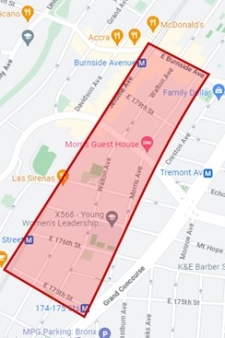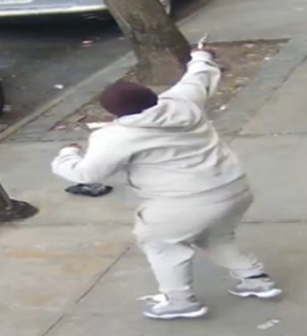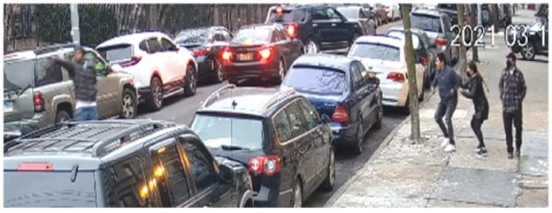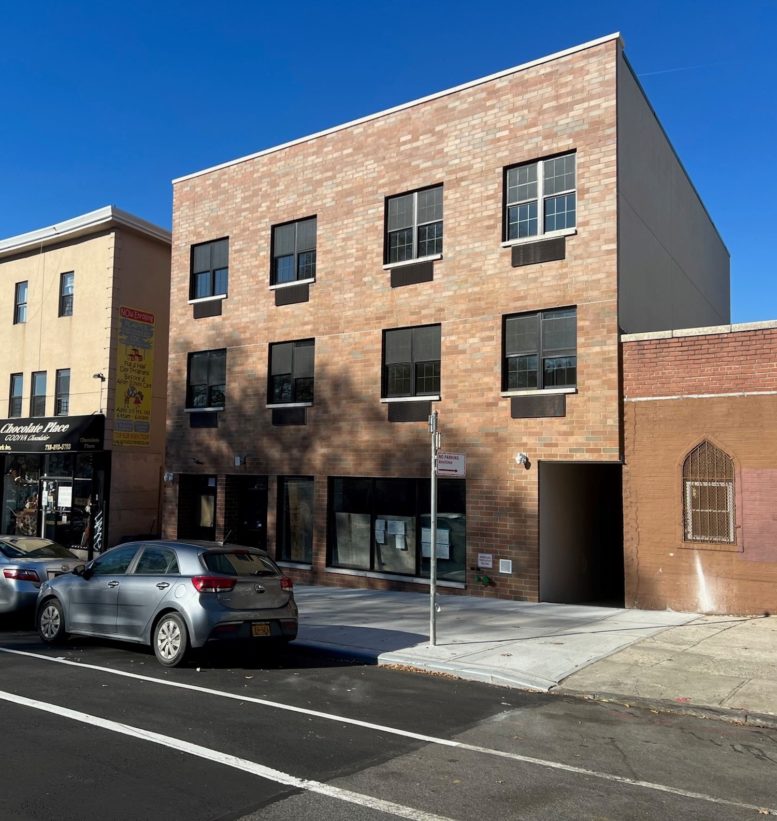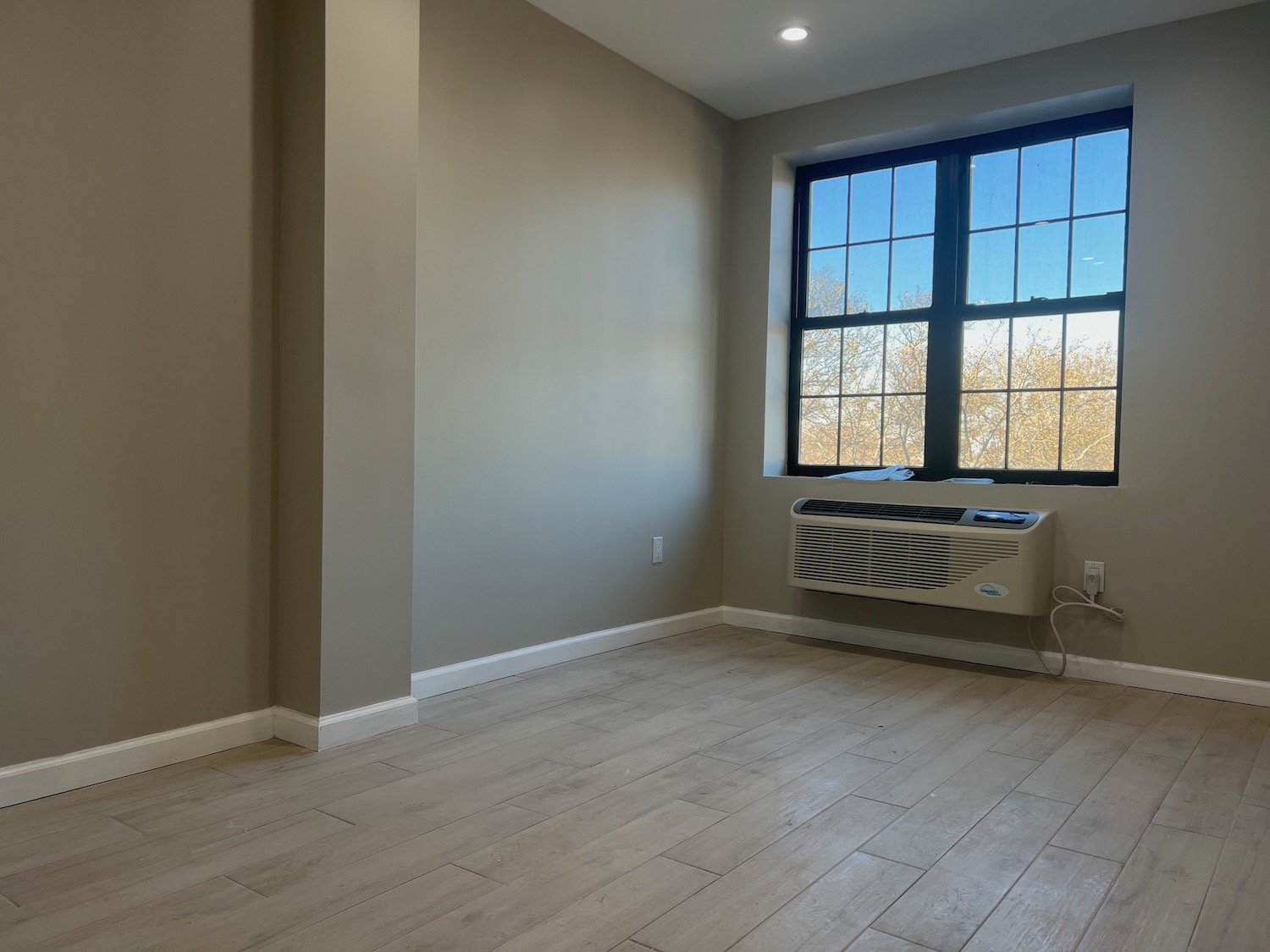Initiatives in Plan Focus on Protecting New Yorkers from Climate Threats, Improving Quality of Life, Building the Green Economy
New York City Mayor Eric Adams today released PlaNYC: Getting Sustainability Done, New York City’s long-term strategic climate plan that highlights efforts the city is taking to protect New Yorkers from climate threats, improve quality of life, and build the green economy. This is the fifth in a series of climate plans released every four years by the city, as required by local law, and was developed with input from the New York City Climate Cabinet, which consists of representatives from more than 35 city agencies and offices, the Sustainability Advisory Board, and stakeholders. Actions in the plan specifically focus on execution and implementation, delivering on promises made to New Yorkers, and creating an equitable, healthy, and resilient future. PlaNYC: Getting Sustainability Done also highlights opportunities to leverage available state and federal funding sources, and comes in tandem with calls from Mayor Adams to ensure New York City receives its fair share of federal and state funding.
“We’re in this together, we will get through this together, and I am so proud of the work we are doing to protect our city, Mother Earth, and all New Yorkers from the effects of climate change,” said Mayor Adams. “New York City has already taken major steps to become more sustainable, resilient, and equitable, including breaking ground on the Lower East Side Resiliency Project, passing Local Law 97 to reduce building emissions, and rapidly electrifying our city’s fleet, which is already the greenest in the nation. But we are just getting started. Today, we are taking these efforts to the next level with PlaNYC: Getting Sustainability Done, which will increase resilience, protect our infrastructure, and save lives. This plan is about making sure our seniors can afford an air conditioner and their monthly utility bill to keep cool during increasingly hot weather, providing opportunity for our young people to get the education and training they need to become part of the new green economy, and making sure all New Yorkers have an opportunity to drive an electric vehicle, put up solar panels, or retrofit their home, no matter where they live or work. We have so much to be proud of and so much to protect, and PlaNYC will create a cleaner, greener, more just city for all.”
"Today's release of the ‘Get Stuff Done’ PlaNYC is a win for a greener, healthier, and safer city," said Deputy Mayor for Operations Meera Joshi. "Since the start of this administration, New York City has opened the city's first all-electric school building, broke ground on the Brooklyn Bridge-Montgomery Coastal Resilience project, completed a $50 million sewage and water main overhaul to improve drainage in Southeast Queens, and issued a Clean Construction executive order to reduce construction emissions from city projects. Today, we are taking action to take polluting vehicles off our streets, offer more affordable renewable energy options, put our trash to work, and lower our emissions from every major source — buildings, transportation, and food. Thank you to Mayor Adams, Chief Climate Officer Aggarwala, Director Charles-Guzman, and the climate leaders throughout New York City for advancing an action plan that meets the demands of the moment.”
“With PlaNYC: Getting Sustainability Done, we will deliver a safer, more resilient city to New Yorkers, improve our quality of life, and ensure we have the best-trained green workforce in the world,” said First Deputy Mayor Sheena Wright. “And we will put people first — especially those who have borne the brunt of climate change. I’m excited to work with my colleagues across government to get New Yorkers the climate solutions we deserve.”
“PlaNYC is crucially important to New York City’s future, said Deputy Mayor for Economic and Workforce Development Maria Torres-Springer. “This plan sets a road map for how we can more quickly and meaningfully meet some of the most pressing challenges of climate change and, at the same time, expand the green economy, foster innovation, build new industries and create more and better jobs for tens of thousands of New Yorkers. For example, new industries such as offshore wind will create jobs and deliver a new, clean, sustainable energy source that will power the transition to a fossil fuel-free economy.”
“I am proud of PlaNYC, which not only addresses the urgent challenges facing our planet, but also reflects our commitment to integrating sustainability into our strategic priorities,” said Chief of Staff Camille Joseph Varlack. “By implementing this plan, we are taking bold steps towards a more sustainable future, and I am confident that our collective efforts will make a meaningful impact in preserving our planet for generations to come.”
“Just 15 years ago, many people considered climate change a scientific theory. Today we know our climate is changing so rapidly that we must take immediate action to protect all New Yorkers,” New York City Chief Climate Officer and New York City Department of Environmental Protection (DEP) Commissioner Rohit T. Aggarwala. “This plan lays out what we are doing to combat climate change on all fronts — making our buildings more energy efficient, reducing waste and transportation emissions, creating and storing renewable energy, and creating a new coastal resiliency division to protect the five boroughs from more intense storms and the worst effects of climate change.”
"This is a PlaNYC that threads public health, quality of life, and environmental justice throughout its initiatives and re-focuses climate work beyond decarbonization and adaptation,” said Mayor’s Office of Climate & Environmental Justice (MOCEJ) Executive Director Kizzy Charles-Guzman. “More accessible and well-maintained green spaces, healthier waterways and wetlands, cleaner and safer streets, healthier food and air, and thermal safety indoors will improve and save human lives today, even as we continue to adapt for the climate risks of the future. This work will also have global repercussions as one of the world’s largest economies — New York City — tirelessly acts to mitigate its own impact on our planet.”
Implementing Climate Budgeting to Align City Resources with Sustainability and Resiliency Goals
New York City will be the first big city in America to launch a climate budgeting initiative to ensure that it remains laser focused on prioritizing climate change and environmental justice in investments and decision-making. Climate budgeting is a process that incorporates science-based climate considerations into the city’s budget decision making process by evaluating how actions and spending today contribute to meeting longer-term climate targets. The process will help the city understand the climate impact of the dollars spent, identify where more investment is needed, and champion forward-looking investments to equitably achieve net-zero emissions citywide by 2050, as well as bolster resilience to extreme heat and flooding. The Mayor’s Office of Management and Budget will lead this initiative in partnership with MOCEJ.
Maximizing Funds from the Federal and State Funding
New York City is in the midst of tremendous budgetary challenges created in part by the asylum seeker crisis, decreased tax revenue, and the end of COVID-19 era stimulus funding from the federal government. Given the fact that New York City contributes more to the federal and state governments than it typically receives in return, coupled with the unprecedented funding committed to climate action — in legislation such as the Infrastructure Investment and Jobs Act, the Inflation Reduction Act, and the New York State Environmental Bond Act — several PlaNYC initiatives would benefit from federal and state grants. PlaNYC aims to ensure the state gives New York City residents and businesses their fair share of climate funding. The city has therefore formed the New York City Federal Infrastructure Funding Task Force, which is working to maximize federal and state funding by helping select strong shovel-worthy and shovel-ready projects that meet the guidelines and standards of new and existing competitive grant opportunities.
Leading by Example
PlaNYC highlights areas in which New York City is leading by example to inspire private sector action and send a message to New Yorkers that protecting the city’s future is a top priority. The city will install solar energy, electric building infrastructure, green roofs, and other renewable energy on all viable city-owned property by 2035. The city will also phase out capital spending on new fossil fuel equipment and infrastructure and introduce a major citywide zoning text amendment — ‘City of Yes for Carbon Neutrality’ — which will remove obstacles to deploying clean energy, facilitate building retrofits for sustainability, and eliminate barriers to electrification.
The Public Solar Initiative
In coordination with the Office of the Comptroller, the Adams administration will create a first-of-its-kind public solar financing program for one-to-four family, low-income homeowners in environmental justice communities (neighborhoods that have historically, and continue to, experience the disproportionate impacts of climate change). In the past, low-income homeowners have been excluded from the clean energy economy and could not afford the upfront costs of installing rooftop solar panels, heat pumps, or other energy efficiency retrofits. The Public Solar initiative will help overcome those cost barriers. The city will pursue funds from the federal Greenhouse Gas Reduction Fund to provide 3,000 homes with proactive door-to-door outreach and financial assistance for rooftop solar panels over the next five years.
Protecting New York from Climate Threats and Reducing Carbon Emissions
The future of New York City — and the planet — depends on reducing emissions and adapting to the clear and present danger of climate change. Extreme heat and flooding — from storms to sea level rise and rainfall — take hundreds of lives each year and costs billions of dollars. Sea levels in New York City have already risen by a foot since 1900 and are projected to rise by up to 5.4 additional feet by the end of the century, according to the New York City Panel on Climate Change. New York City’s floodplain contains nearly 20 percent of the city’s area, and by the 2080s, large portions of some coastal neighborhoods could flood with greater frequency. The city will develop minimum flood resiliency standards for shoreline assets and establish a citywide level of service for stormwater infrastructure, ensuring that New York City’s coast, as well as vulnerable inland communities, are invested in and protected.
The city will also launch a program to explore housing mobility and land acquisition options, to support residents interested in moving from flood-vulnerable areas through housing and financial counseling and convert newly acquired land into resilient parcels that manage flooding. The city will pursue state and federal grants to acquire properties in flood-vulnerable areas.
Further, PlaNYC is dedicated to addressing extreme heat. Scientists predict in an average year in the 2030s, there will be up to three times as many 90-degree days and nearly four times as many heat waves as there have been in the recent past. The city will maximize access to indoor cooling by requiring all new building construction to include cooling infrastructure and advocating for reforms to the New York State Home Energy Assistance Program so that it broadly covers equipment and energy costs for cooling in addition to heating.
Additionally, the city will continue to reduce emissions by helping large private buildings comply with Local Law 97, which aims to reduce the emissions produced by New York City’s largest buildings by 40 percent by 2030 and to be carbon-neutral by 2050. To do so, the city will develop financing tools and work with state partners to identify state incentives to accelerate compliance, develop trainings and certifications, and expand NYC Accelerator — a one-stop-shop for building stakeholders to improve energy efficiency and reduce carbon emissions from New York City buildings. Moreover, PlaNYC reinforces New York City’s leading efforts in clean construction by requiring the city’s capital project agencies to commit to actions that will lower embodied carbon — greenhouse gas emissions arising from the manufacturing, transportation, installation, maintenance, and disposal of building materials. This plan will encourage industry partners to gain experience with low carbon construction materials and methods and create accompanying codes for common materials. This will build a market for low-carbon construction alternatives with electric construction equipment and continued research and development of new construction means and methods.
In order to prevent emissions and protect New Yorkers from climate change threats, the city is also committing to the following:
- Reducing the city’s carbon emissions from food by 33 percent by 2030 and launching a corporate challenge to help the private sector reduce its carbon emissions from food by 25 percent by 2030.
- Releasing a new, integrated emissions inventory, which takes into account emissions from the production of goods and services New Yorkers use, regardless of where that production takes place.
- Reducing greenhouse gas emissions by eight percent in the manufacturing of concrete for DDC projects by using limestone cement in place of ordinary portland cement.
- Implementing New York City Department of Housing Preservation and Development design guidelines to address energy efficiency, sustainability, and resiliency retrofits.
- Achieving a 30 percent tree canopy cover — representing 15,388 additional acres of tree canopy.
- Continuing to design and construct world-class neighborhood-scale coastal protection projects and partnering with the United States Army Corps of Engineers on the NY & NJ Harbor & Tributaries Feasibility Study process.
- Bringing the Climate Strong Community program to the Soundview (Bronx), Brownsville (Brooklyn), Corona (Queens), and Port Richmond (Staten Island) neighborhoods while building on prior work in Canarsie (Brooklyn) and East Harlem (Manhattan) to unlock federal and state funding
- Developing an air quality monitoring program to understand air quality impacts of pollution within neighborhoods and improving regulations and rules.
Improving New Yorkers’ Quality of Life
New York City has built one of the largest urban park systems in the country, invested billions in its wastewater systems, brought marine life back to its waterways, and developed one of the most robust transportation systems of any major city in the United States. Continuing to improve these systems will lead to a more resilient and sustainable city while helping to mitigate and adapt to climate change. That starts with the city’s green spaces. Too many of its natural areas are underappreciated, challenging to access, and in need of more dedicated stewardship. Across all five boroughs, there are greenway projects in planning, design, and construction, which will create safe active transportation routes and facilitate connections between parks. The city will improve more than 300 miles of trails, many of which are in outer borough parks, and make 12,000 acres of existing city-owned natural areas more accessible through improvements, programming, and promotion. The city will invest in forested areas and improve its health, as well as the overall health of its communities.
PlaNYC: Getting Sustainability Done also focuses on improving the health of the city’s waterways and minimizing combined sewer overflows, which occur when heavy rainfall overwhelms wastewater treatment capacity. Prior to 1990, more than 100 billion gallons of combined sewer overflows were released annually. By 2022, annual combined sewer overflow discharges had been reduced by approximately 85 percent. Now, for the first time in New York City history, the city will develop a strategy to end the discharge of untreated sewer overflows by 2060, both through green infrastructure, like rain gardens, and through grey infrastructure, like the retention tanks the Adams administration recently broke ground on along the Gowanus Creek.
The plan additionally addresses how New Yorkers get around — and continues to put walking, biking, and public transit first. The city will create a network of secure bike parking facilities across the city to support and encourage cycling, including the use of e-bikes and cargo bikes. Likewise, the city will develop and pilot different design updates, like wider or multiple bike lanes, bike lane passing zones, and bike speed signal timing progressions on busy bike routes.
Moreover, New York City is implementing actions to achieve its goal to cut transportation emissions in half by 2030. For New Yorkers who have to drive, PlaNYC: Getting Sustainability Done will help make sure that driving electric is a viable option. The city will work to ensure that every New Yorker lives within 2.5 miles of an electric vehicle charging station by 2035, electrify school buses and the city’s fleet, transition for-hire vehicles to electric by 2030, and pursue legislative changes to require that private parking garages and lots make electric vehicle charging available. In order to minimize the impact of diesel-powered truck emissions, the city will also pilot the east coast’s first-ever low emission zone centered on areas with the highest concentration of truck traffic and the worst public health outcomes through incentives and other methods. To support that zone, the city will explore a range of options, including shared charging depots to support the transition to electric trucks, pricing, regulatory, and incentive approaches; expanding the citizen idling complaint program; and more. Furthermore, the city will seek funding to create an incentive program for shipping companies to purchase cargo e-bikes, and work with city and state legislative partners to update cargo e-bike rules to remove unnecessary barriers to their deployment. By getting as many polluting vehicles as possible off the road and through investments in cleaner transportation alternatives, like transit, walking, biking, and electric vehicles, the city will be able to transform into an even more sustainable, healthy place.
The Green Transition: Building a Green Economic Engine
By 2030, there are expected to be more than 230,000 green economy jobs in New York City, across several industries — climate, infrastructure, housing, and more. The green transition will unlock enormous growth, investment, and economic opportunity for New Yorkers while improving quality of life and creating a stronger and more resilient city for future generations. It means investment in public education and training to prepare students for green jobs, more well-paying and accessible jobs for those typically excluded from innovative economic activity, and a supportive landscape for small and expanding businesses. This will generate new businesses, industries, products, and technologies, while also creating pathways for traditional companies to transition away from carbon- and waste-intensive processes toward low-carbon or net-zero solutions.
In order to prepare New Yorkers for these next-generation jobs, the city will launch new climate education and training programs in its public schools. Over the next three school years, this will include the creation of new and expansion of existing Career-Connected Learning programs to provide more than 1,000 students with the DOE career exploration and work-based learning opportunities dedicated to green job training and placement. DOE will also integrate climate education in public school classrooms across all subjects and grade levels by providing up to 1,000 educators with climate education trainings, workshops, and programs, and will launch an annual Climate Action Day for all public schools in the 2023-2024 school year. DOE will complement these efforts by establishing a school certification program for climate education, with up to 25 schools achieving climate credentials per year.
Delivering on NYCEDC’s Offshore Wind NYC plan, the city will attract and create 8,000 to 13,000 new offshore wind jobs by 2035, including jobs that help meet new power generation, supply chain, and local business needs. Many of these new jobs will be focused in green economy sectors, including through component manufacturing and support of Minority, Women, and Disadvantaged Business Enterprises (M/W/DBEs) in construction and professional services as they pivot to meet demand in the industry. The city will also partner with City University of New York campuses to develop facilities and programming to train students for jobs in offshore wind, including as skilled machinists, fabricators, engineers, environmental scientists, and wind technicians.
In addition, the city’s forthcoming Center for Climate Solutions on Governors Island — which will create $1 billion in economic impact and 7,000 jobs — is a model for how New York City will continue to create climate research and workforce hubs to train and educate New Yorkers for green economy jobs and foster entrepreneurship in the climate and environmental science sectors. The city is also launching new sustainability-focused biotechnology hubs — including the first-in-the-nation 50,000 square foot hub at the Brooklyn Navy Yard and a new Materials Innovation Hub — which will catalyze materials science research and development, create connections to industries like fashion and construction, support early-stage materials science companies, and provide opportunities to New Yorkers from diverse backgrounds.
Finally, the city’s investment in the green economy will include ensuring that products once considered to be waste are integrated into a circular economy that creates new jobs and progresses towards the city’s climate goals. That starts with citywide curbside organics collection, which will come to all five boroughs by October 2024. The city will then take that increased volume of organic material and expand DEP’s co-digestion program, so that both wastewater treatment and organics will be transformed into beneficial products like renewable energy and compost while generating green jobs for New Yorkers.
To build New York City’s green economic engine, the city will also:
- Launch its latest set of climate technology pilots this year for energy storage, electric vehicle charging stations, and property technology building off the success of existing innovation studios, like the Resilient Energy Studio.
- Expand production and use of recycled asphalt.
“From greenways to green jobs, our city parks have a vital role to play in New York City’s sustainable future,” said New York City Department of Parks and Recreation (NYC Parks) Commissioner Sue Donoghue. “Thanks to this latest strategic climate plan, NYC Parks and our sister agencies have a clear roadmap to deepen our existing partnerships and make our city cleaner and greener for all New Yorkers, today and tomorrow.”
“To combat the present and future challenges of climate change, New Yorkers must continue to adopt safe, sustainable, and efficient transportation, and the New York City Department of Transportation will continue to support this shift to sustainability by making these options the most convenient choices to get around,” said New York City Department of Transportation Commissioner Ydanis Rodriguez. “A network of secure bike parking facilities will continue encouraging the historic growth in cycling we’ve seen in recent years, and if you must drive, our team will continue to help facilitate the adoption of electric vehicles to ensure every New Yorker lives close to charging infrastructure.”
“The green economy is where the jobs of the future are, and one of my top priorities is ensuring our young people have clear pathways to these great career opportunities,” said New York City Department of Education (DOE) Chancellor David C. Banks. “Schools across the city are hard at work preparing our students to one day lead this city, with a focus on sustainability and care for our environment. We have a responsibility to build a greener city for the next generation, and I commend Mayor Adams and our agency partners across the city that are taking bold steps towards climate resiliency and building the green economy.”
“We proudly support PlaNYC: Getting Sustainability Done as we work to accelerate decarbonization, make game-changing investments for our future, and combat climate change to improve public health,” said New York City Department of Citywide Administrative Services (DCAS) Commissioner Dawn M. Pinnock. “At DCAS, we’re making significant strides to reduce emissions in government operations, from greening our fleet to installing solar panels across our buildings in the five boroughs. Sustainability is at the core of our values as we make city government work for all New Yorkers.”
“PlaNYC is a broad and ambitious plan that will position New York City as a global leader in sustainability, sparking cutting-edge innovation, creating the jobs of the future, and addressing climate change head on,” said New York City Economic Development Corporation (NYCEDC) President and CEO Andrew Kimball. “As outlined throughout the plan, NYCEDC is spearheading several of the initiatives that advance New York City towards a decarbonized economy to achieve our nation-leading climate goals while creating a pipeline of good paying jobs that can benefit all New Yorkers. We look forward to continuing to work alongside Mayor Adams, and our other partners at city agencies, to ensure a safe, livable, strong New York for generations to come.”
“DDC is building thousands of green infrastructure and permeable pavement areas the city will need to manage intense rainstorms, and we’re piloting uses of new, more efficient cement that cuts greenhouse gas emissions in the manufacturing process. We’ve installed green roofs, stormwater recycling systems, geothermal, solar water heating, and high-efficiency lighting and climate controls systems in public buildings in every borough that now meet stringent LEED standards for environmental efficiency. And all of our designs take the effects of future climate change into account as projected by the New York City Panel on Climate Change,” said New York City Department of Design and Construction (DDC) Commissioner Thomas Foley. “DDC has been developing sustainability techniques for years and that is now paying dividends as we are employing those techniques on a citywide scale in infrastructure and public buildings projects.”
“New York City must take bold climate action to dramatically scale up our transition to renewable energy,” said New York City Comptroller Brad Lander. “Public Solar NYC will accelerate solar adoption across the city, make it accessible to all homeowners, create good green jobs, and include renewable power as part of our public infrastructure. PlaNYC also takes critical steps towards aligning the city’s budget process with climate goals, improving air quality in communities of color most adversely impacted by climate change and pollution, and making our neighborhoods more resilient to the intense storms and extreme heat that climate change is already bringing. We were proud to partner with the administration earlier this month in making New York City a leader with our ambitious plan to decarbonize our pension funds, and we’re proud to join Mayor Adams and Commissioner Aggarwala today."
